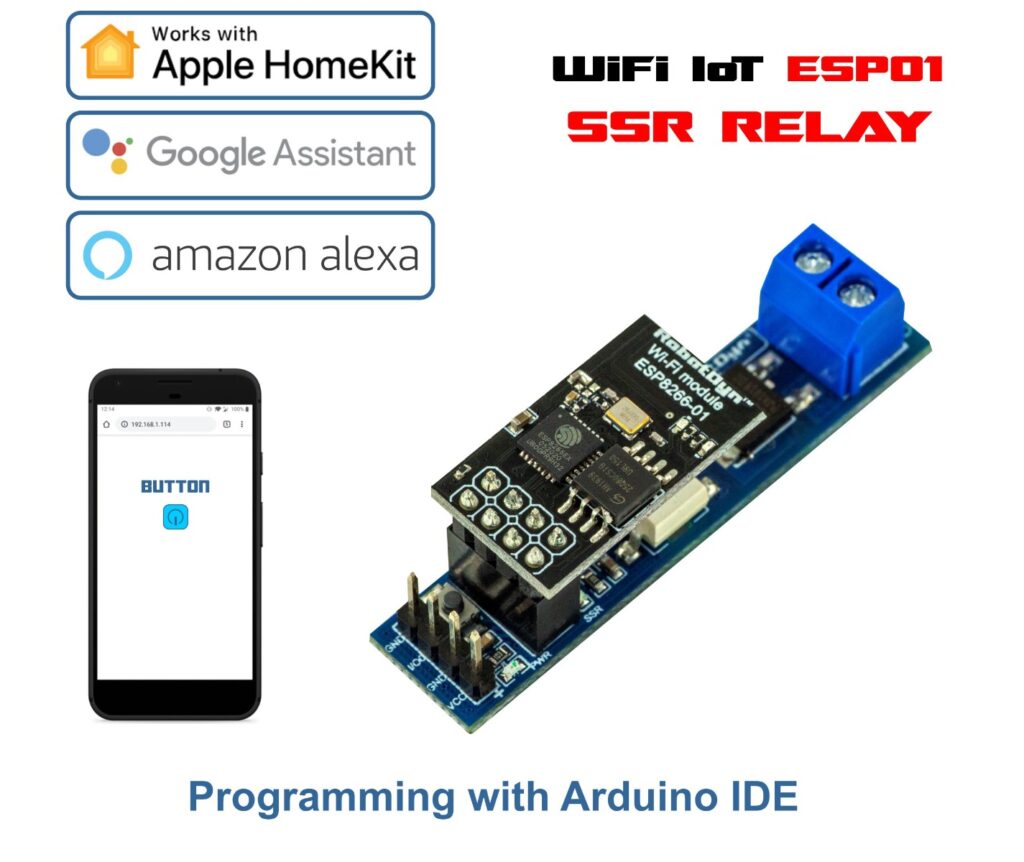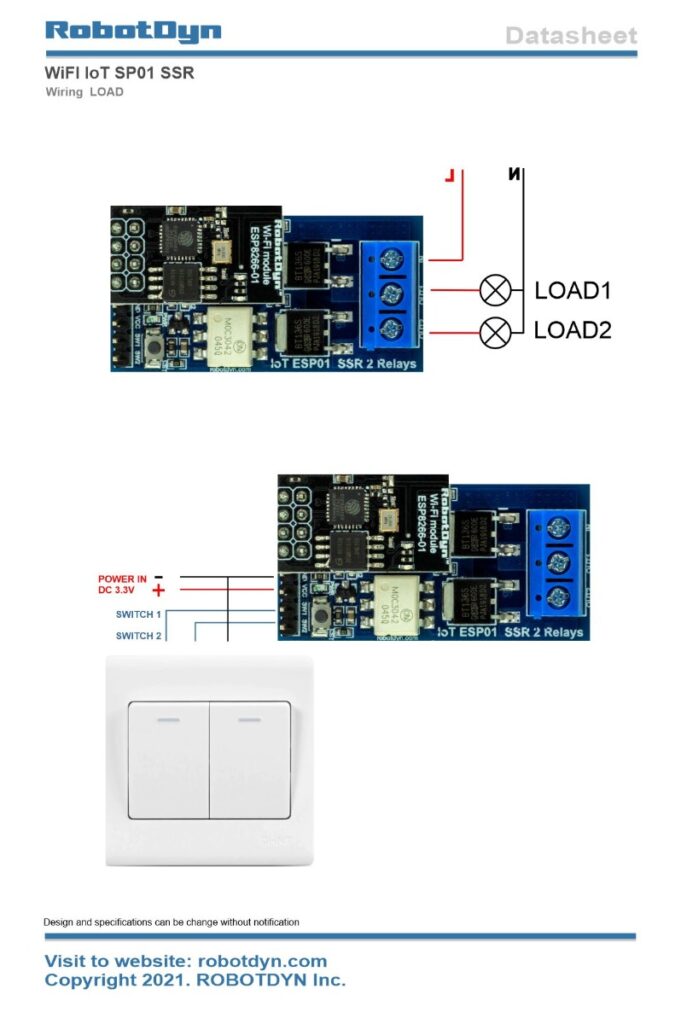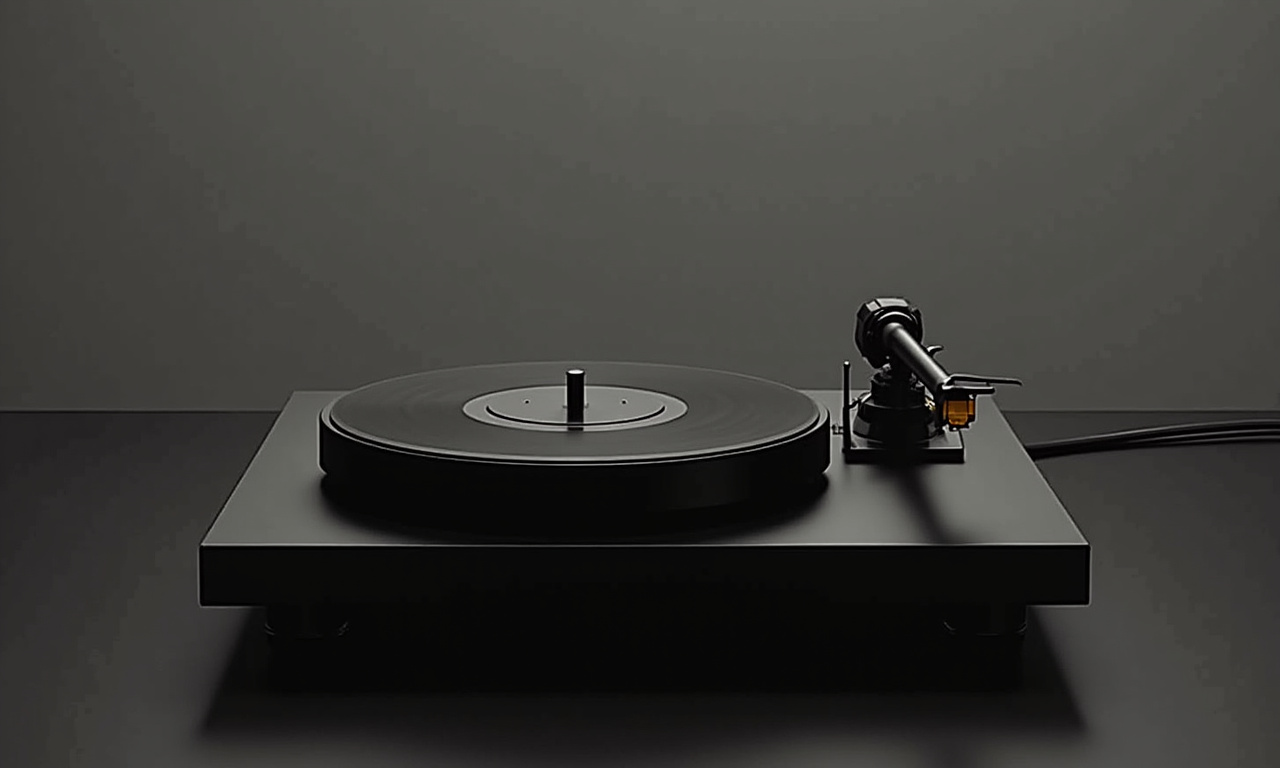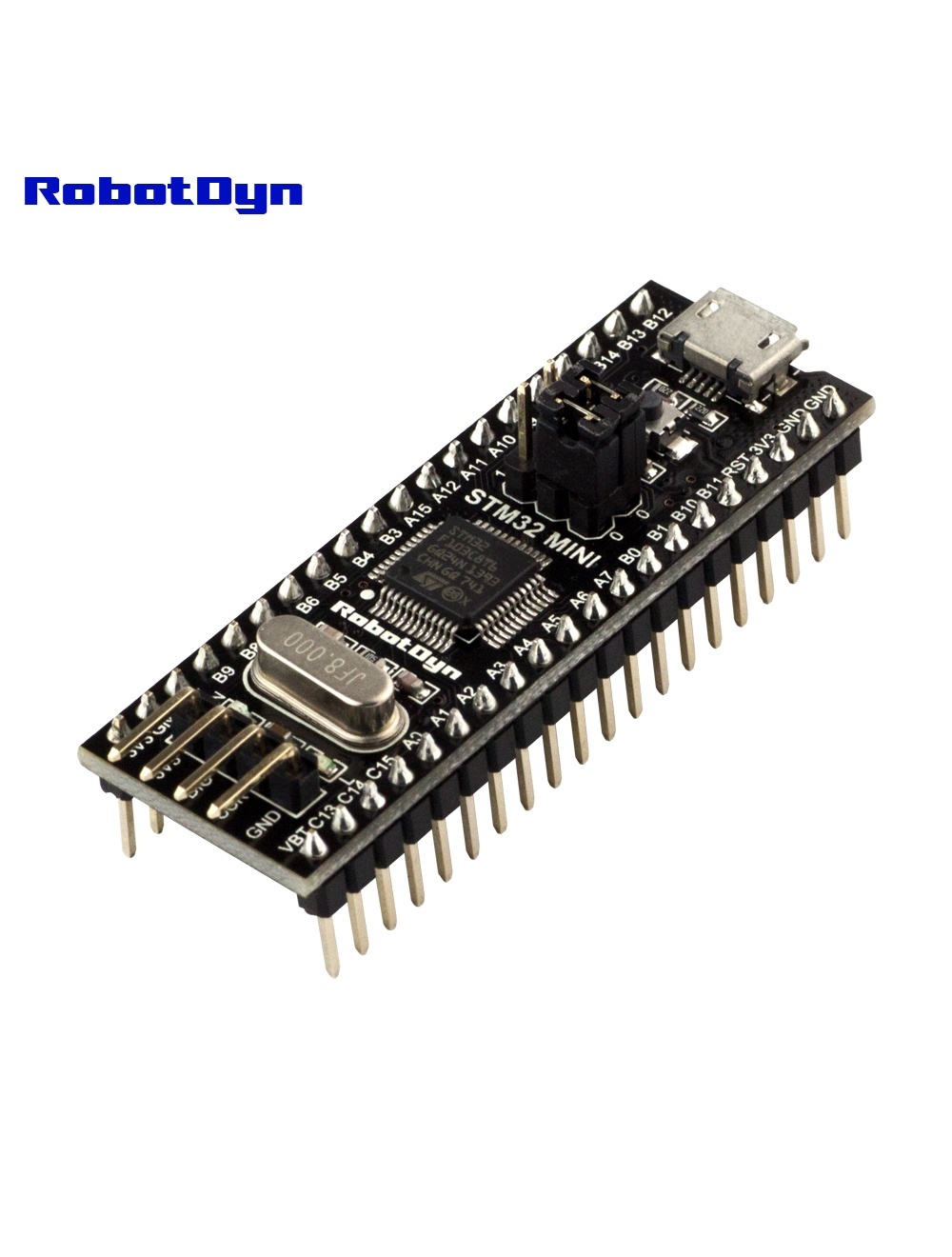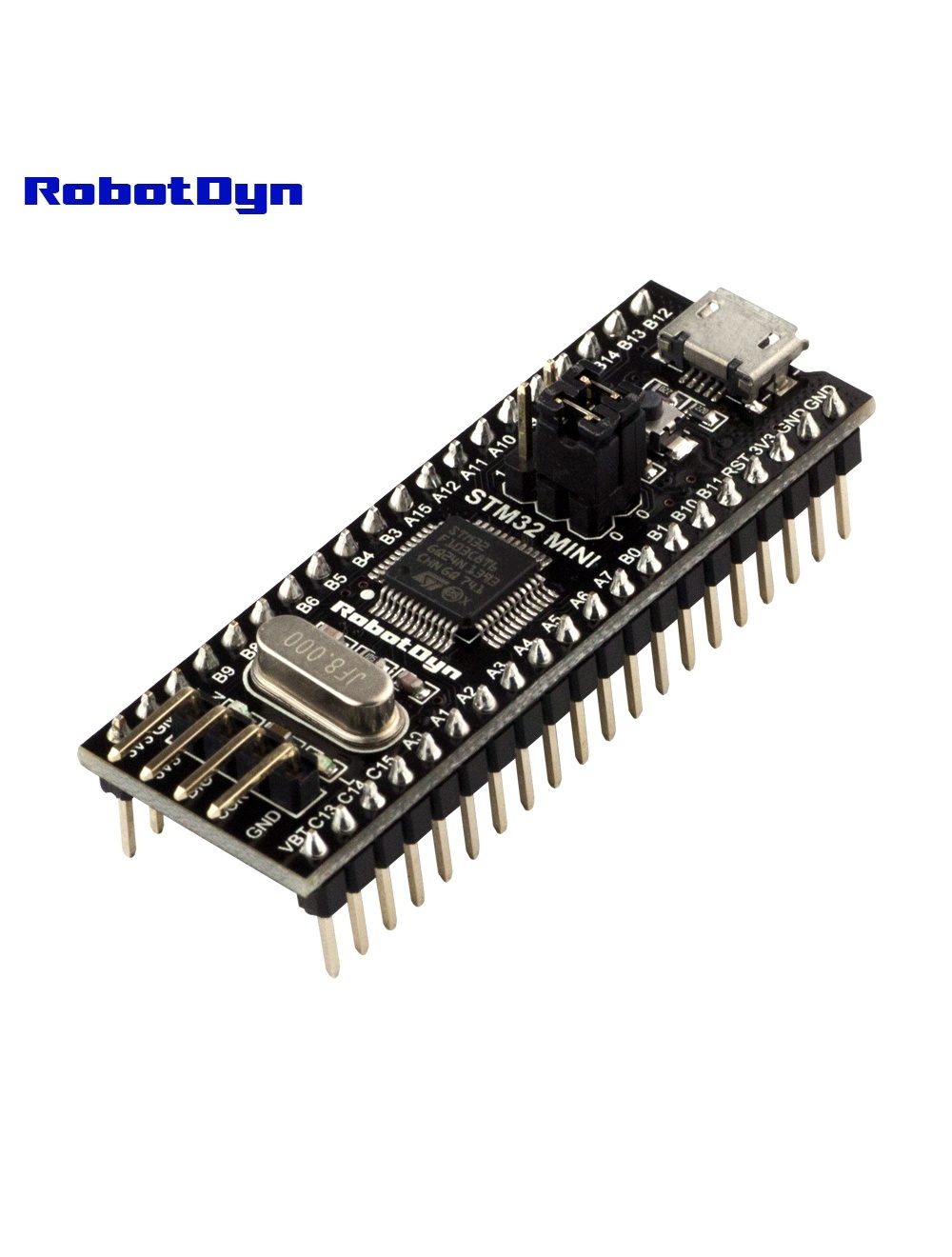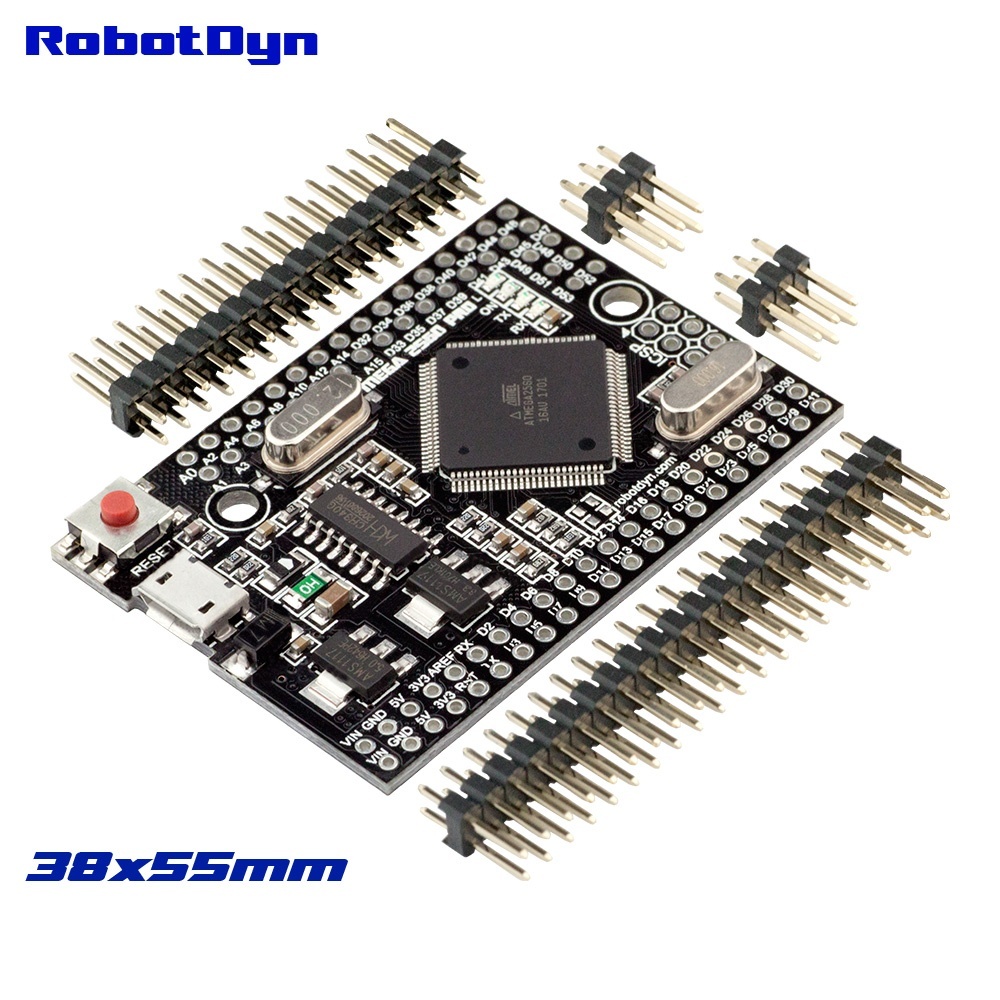Product Overview
This WiFi IoT ESP01 SSR Relay based and do control on ESP-01 ESP8266 microcontroller WIFI module. It is designed for smart home, Internet of thing and others DIY project. With this ESP01 SSR module, you will easy to DIY your smart switch to control any device by phone, voice assistant or other device trough internet.
For power use the power DC 3.3V with low consumption ~ 10mA Also can connect the wall switch or button for external function. With this module can to control any AC load for MAX 4A 600V.
* We use only HIGH quality NEW brand components: NXP, ON semiconductor, with ROHS, CE and UL certificates.
Module Specification
| VAC | AC MAX 600V/4A |
| Operating voltage | 3.3V |
| Signal level | 10mA |
| Thyristor BT136 | 600B |
| Optoisolator | MOC3042 |
| Switch IN | Dry contact |
| Operating Temperature: | -20 to 80°C (-5 to 175°F) |
| Isolation: | v/dt of 2000 V/µs Typical, 1000 V/µs Guaranteed |
| Turn-On/OFF Time: | 20 ms, ac; 05 cycle |
| Safety and Regulatory Approvals for components | – UL1577, 4,170 VACRMS for 1 Minute – DIN EN/IEC60747-5-5 |
Connection 1 line module:
SSR = ESP01 – GPI/O1 (HIGH – ON)
SWITCH IN = GPI/O0 + GND (Switch push – LOW level)
Connection 2 lines module:
SSR1 = ESP01 – GPI/O2 (HIGH – ON)
SSR2 = ESP01 – GPI/O0 (HIGH – ON)
SWITCH IN 1= GPI/O1 + GND (Switch push – LOW level)
SWITCH IN 2= GPI/O3 + GND (Switch push – LOW level)
SSR or Contact Relay?
These SSR’s inherently more reliable and capable of higher overloads before failure than contact relay. Heat is developed in a solid-state relay due to the nominal voltage drop across the switching device.
Contact relays work in a simple way – when you energize the coil, the contacts engage. The contacts will open when you de-energize the coil. You will need a simple transistor to drive it. One thing that can happen is inductive kickback; if the switch in the circuit is initially closed and then immediately opened, there will be an instantaneous drop in current. To prevent this situation, you will need to add snubbing. Another thing is that relay contacts are not invincible; if you open a contact under load, you can break it and it will not open up again. On the other hand, if a relay rated for power is used and you try to switch small signals, the contacts can eventually get dirty and won’t get a good connection between the contacts. One of the biggest features of SSR is being silent, thanks to its solid-state. SSR can be used as PWM (Pulse Width Modulation) for regulation control valve actuators in radiator heating. Because there is no inductive coupling, SSR can be used in dangerous environments, particularly in explosive sensitive environments where sparking relay contacts are absolutely out.
SSR outputs have a much longer lifetime than relays. Because they’re built of semiconductors, they can last millions of cycles. To put this in perspective, let’s imagine that you need to control a PWM actuator to control heating; it will work with a frequency of 1Hz (once per second). The relay can usually last 100,000 cycles, which will give around 1 day and 4 hours of work and constant clicking noise. SSR can last/work millions of cycles, and it is silent.
